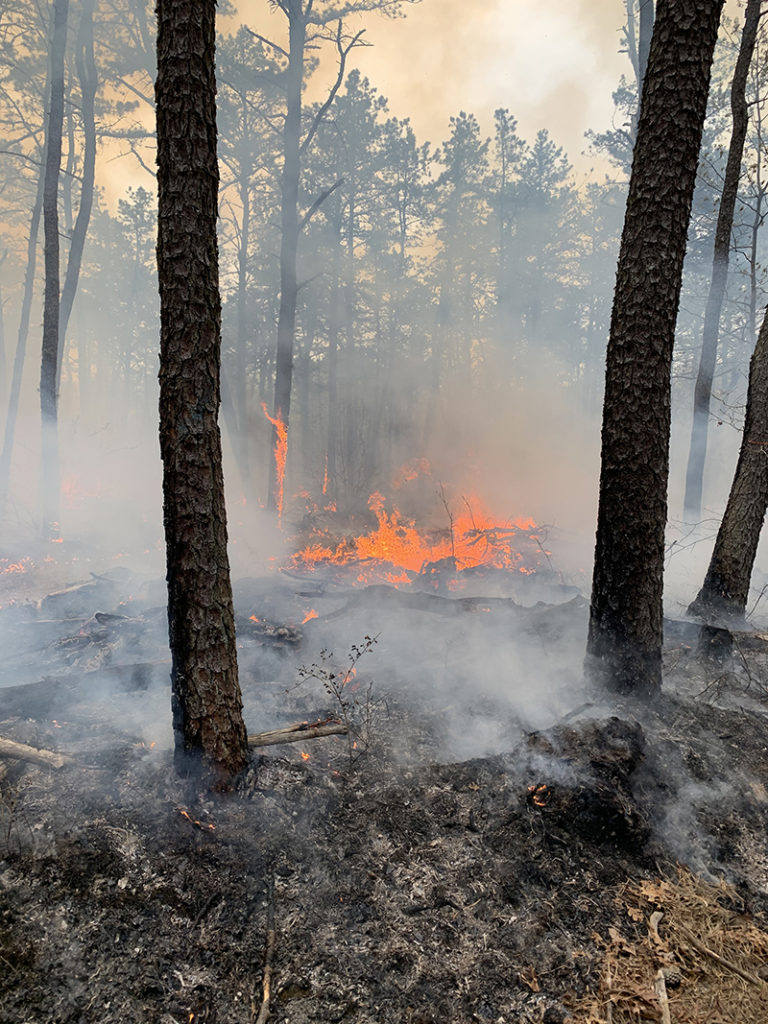Fire management plan nearly 25 years in the making outlines how controlled burns can prevent forest fires

When you think of the best way to fight forest fires, you probably don’t think “by starting another fire.”
But that’s actually the method being used.
The Central Pine Barrens Commission has released its “Prescribed Fire Management Plan,” the goal of which is to reduce forest fires by burning off the “fuel” that dead branches and undergrowth provide.
“It may seem ironic that fire is the best tool we have to prevent devastating wildfires and ensure the continued health of the spectacular Central Pine Barrens region, but that is the case for many reasons,” the commission’s interim executive director, Judy Jakobsen, said in an interview.
The commission is under a five-year contract to the state Department of Environmental Conservation to carry out the prescribed fire plan, she said.
The DEC and the Pine Barrens Commission have been training in recent weeks at areas like Otis Pike Preserve and Line Road in Calverton, Sarnoff Preserve in Riverside and Whiskey Road in Rocky Point.
“This is quite an effort in which we can move forward in a collaborative way with the DEC in getting prescribed fire back in the woods, and hopefully it will work to improve forest health and improve public safety as well,” Ms. Jakobsen said.
A prescribed fire, also known as a controlled burn, is described by the commission as a “carefully planned and implemented fire for land management purposes.”
“The Central Pine Barrens is a globally rare, culturally rich and fire dependent ecosystem that continues to experience declines in ecosystem health and increased wildfire risk caused by a lack of fire disturbance,” the management plan states.

The decimation of pitch pines by the recent arrival of the southern pine beetle serves as just one example that typifies declining forest health in the Central Pine Barrens.
“The risk to and loss of homes and businesses that occurred during the 1995 Sunrise fire and the more recent 2012 Crescent Bow fire reinforces that this system is fire prone,” the plan states.
The plan, a requirement under a state grant the commission received, has been 25 years in the making, Ms. Jakobsen said.
The DEC has been doing prescribed burns for many years, usually grassland burns. In the last eight to 10 years, they have done woodland burns in places like Rocky Point.
Another public benefit of the burns is that they reduce the number of ticks in the woods, Ms. Jakobsen said.
The commission has also been working with individual homeowners on ways to protect their homes from wild fires.
“We review people’s home structure looking for vulnerability to wildfires and we have recommendations,” she said. They recommend keeping vegetation at least 30 feet from structures.
The full 150-page plan can be found on the commission’s web site at pb.state.ny.us.








